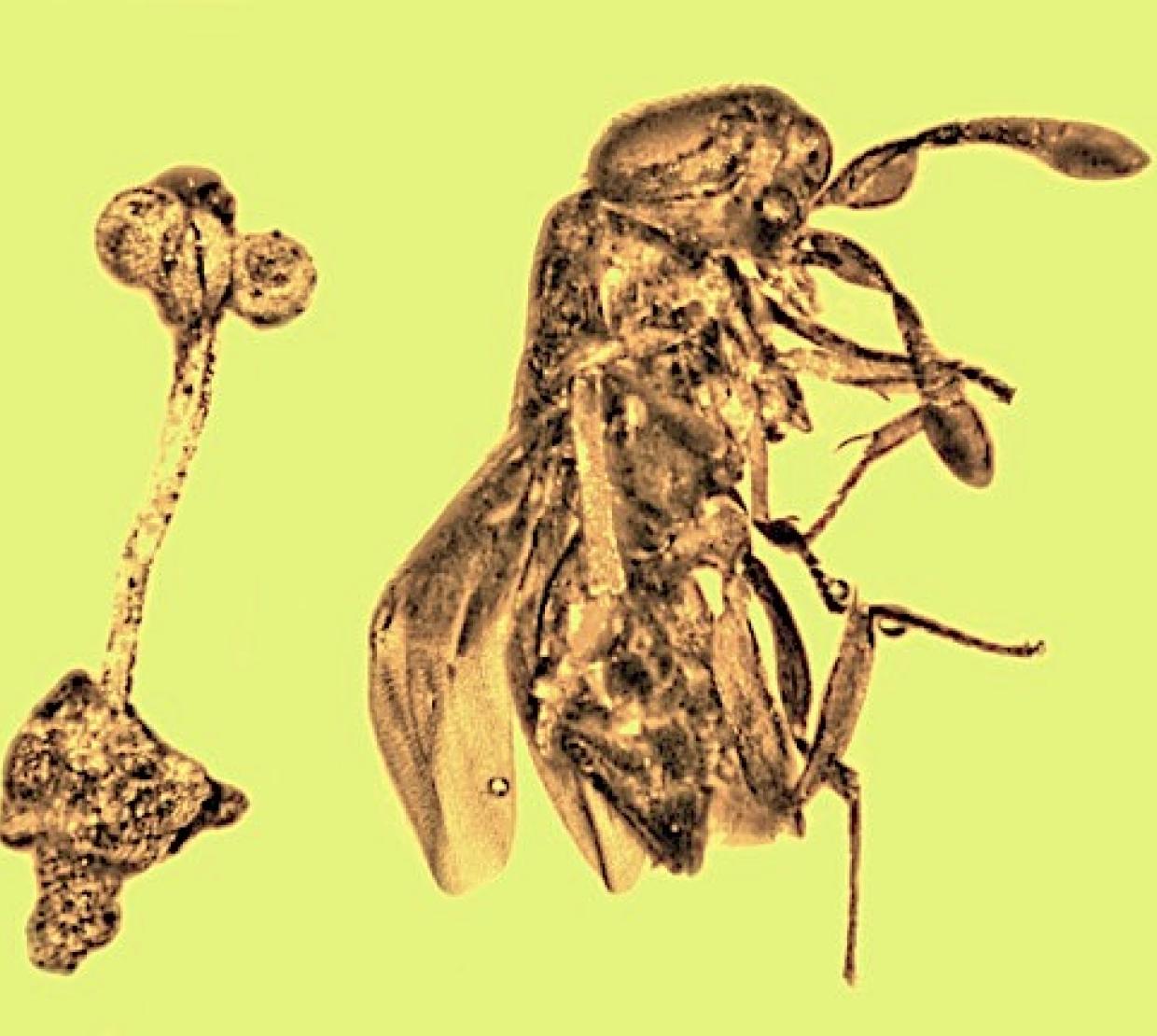Oregon State University fossil research has revealed an exquisite merger of art and science: a long-stemmed flower of a newly described plant species encased in a 30-million-year-old tomb together with a parasitic wasp.
“Based on interests, background and current environment, everybody has their own way of interpreting visual images in the natural world,” said George Poinar Jr., professor emeritus in the Department of Integrative Biology. “Thus an organism can be described, given a scientific name and then stored away in a taxonomic hierarchy. The same organism can be regarded as an art object and even assigned to a particular art period.”
The study by Poinar, published in Historical Biology, reports the first description of a fossil flower of the Euphorbiaceae family in amber, in this case amber from the Dominican Republic, home to some of the world’s clearest fossilized tree resin.
Members of Euphorbiaceae, also known as the spurge family, grow worldwide, with 105 of its 300 genera, and 1,800 species, found in tropical regions of the Americas.
“Fossil flowers of members of this family are quite rare,” Poinar said. “I could only find one previously known fossil, from sedimentary deposits in Tennessee.”
Examples of members of this family include the rubber tree, the castor-oil plant and the poinsettia. Many members contain a milky latex while some species are useful as a source of oil or wax.
Poinar, an international expert in using plant and animal life forms preserved in amber to learn about the biology and ecology of the distant past, named the new flower Plukenetia minima. It’s the first record of the genus Plukenetia on the island of Hispaniola, home to Haiti and the Dominican Republic, and also the first fossil record of the genus.
Read the full story here.




